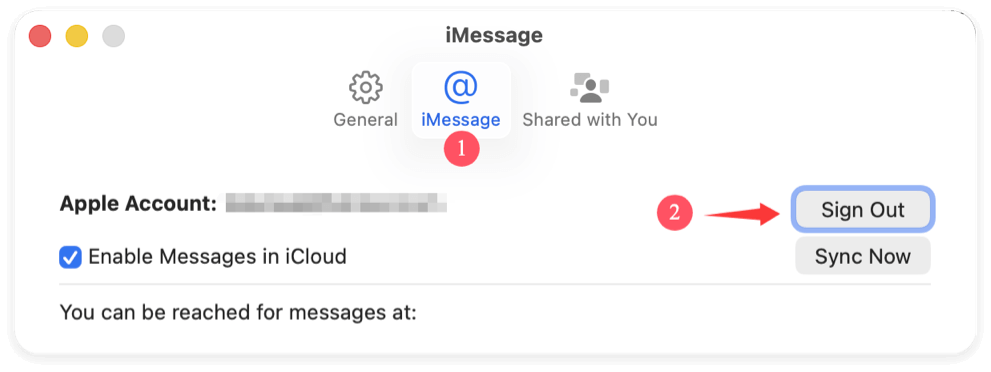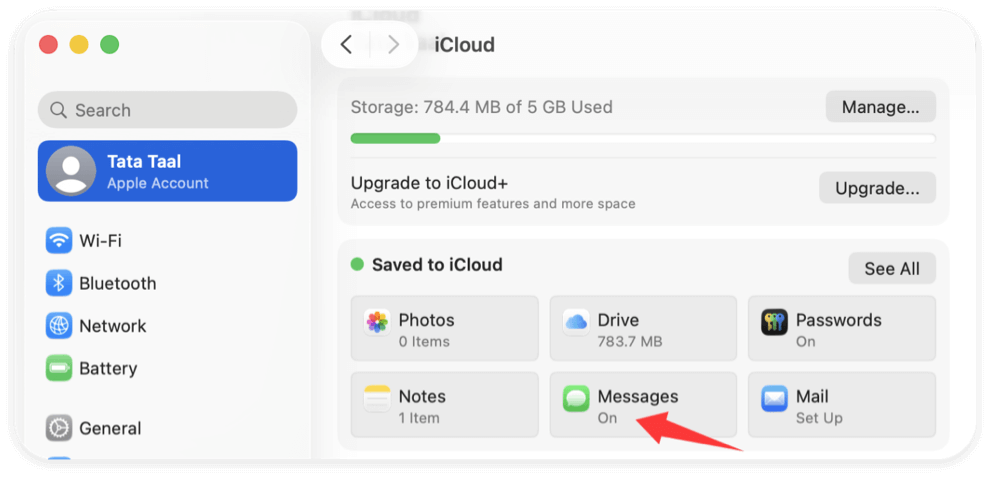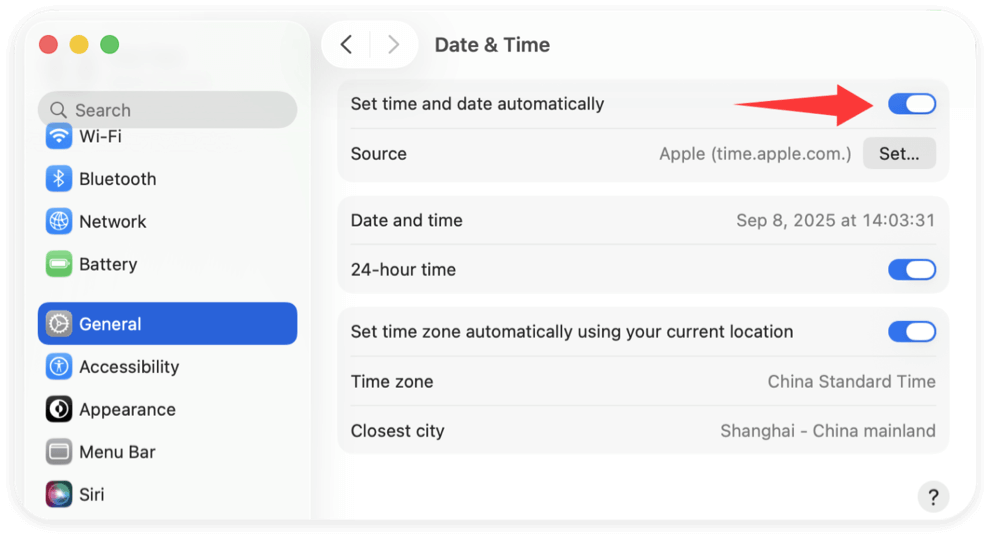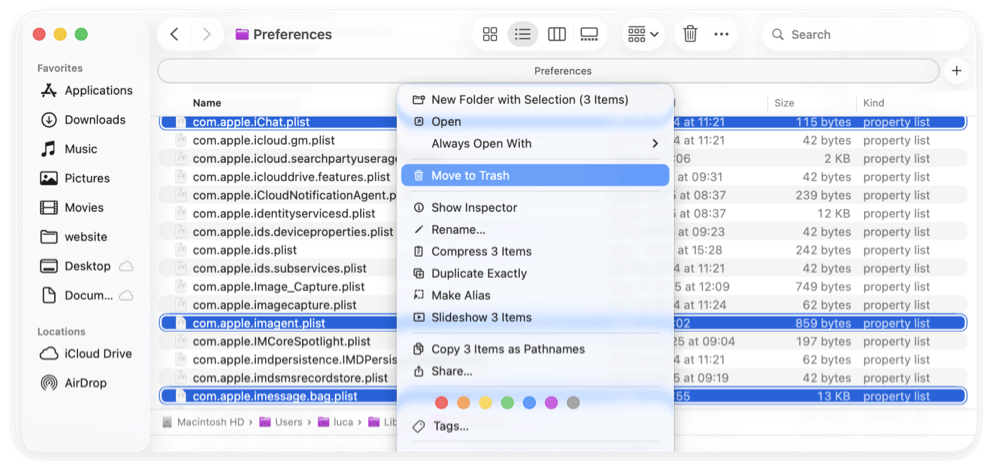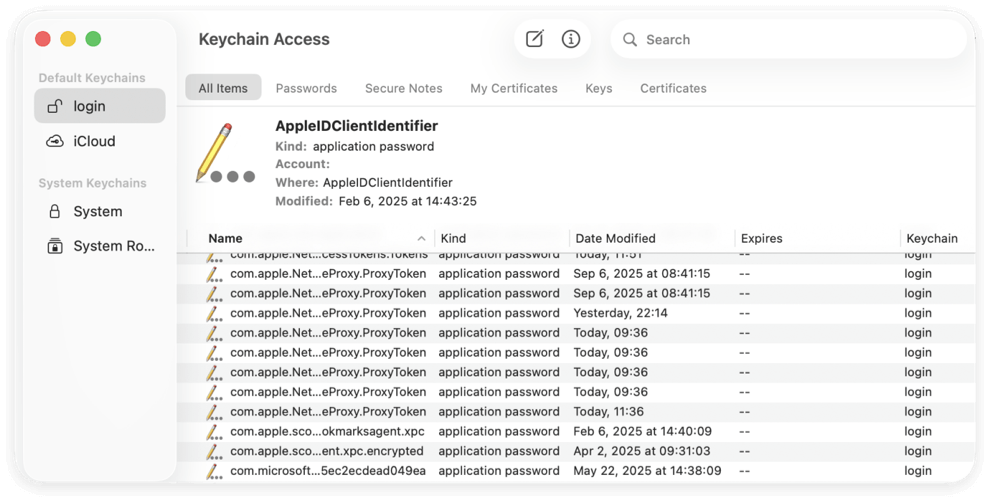Before we start: To protect your data safe in case of "An Unknown Error Occurred" in iMessage on Mac, it's better to back up your data with Time Machine or make a full clone of your Mac. It can help you restore data easily if you encounter any issues in the future.
PAGE CONTENT:
iMessage is one of the most convenient features for Apple users, allowing seamless communication across iPhones, iPads, and Macs. However, this convenience can quickly turn into frustration when errors occur—especially vague ones like "An Unknown Error Occurred." This error can disrupt your ability to send or receive messages on your Mac, and the fact that it's "unknown" makes it even harder to diagnose and fix.
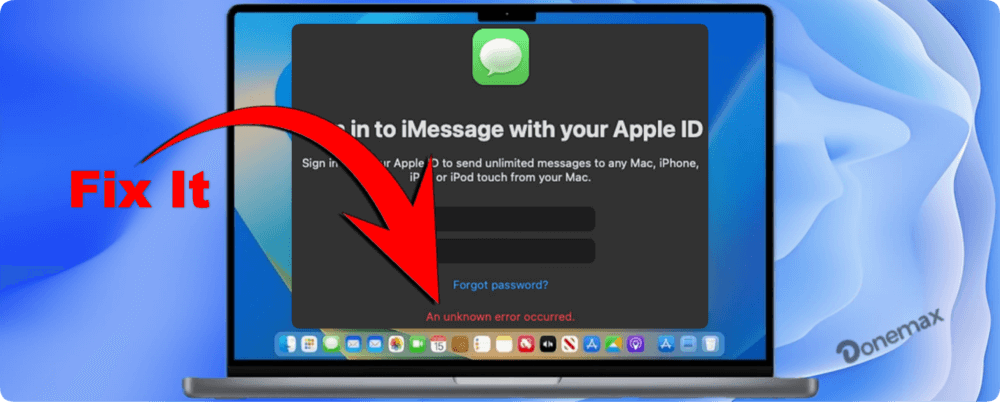
If you've stumbled upon this message while trying to use iMessage on your Mac, don't worry. This article will walk you through all the steps necessary to resolve the issue, no matter the root cause.
What Does "An Unknown Error Occurred" in iMessage Mean?
Unlike specific error codes, this message doesn't tell you exactly what's wrong. It's a general error that can be caused by various underlying issues, such as:
- Network problems
- Apple ID or iCloud account issues
- Outdated software
- Corrupted system or preference files
- Keychain access issues
- Temporary Apple server downtime
Because the error is generic, you'll need to troubleshoot step by step to identify the fix that works for your situation.
Solutions to Fix "An Unknown Error Occurred" in iMessage on Mac
Solution 1: Perform Preliminary Checks
Before diving into complex solutions, it's wise to start with the basics.
1. Check Internet Connection
A steady internet connection is necessary for iMessage to function. If your Mac is not properly connected to Wi-Fi or Ethernet, it might fail to connect to Apple's servers.
- Try loading a website in your browser to verify the connection.
- Restart your router if needed.
- Switch networks or connect to a mobile hotspot to rule out local network issues.
2. Start Your Mac Again
Occasionally, a quick restart can fix transient issues that affect iMessage.
- Click the Apple menu → Restart.
- After restarting, try logging into iMessage again.
3. Check Apple System Status
Visit the Apple System Status page and make sure iMessage is running without issues. If Apple's servers are temporarily down, the issue is likely not on your end.
4. Update macOS
Outdated software can lead to incompatibility or bugs. Ensure you're running the latest version of macOS:
- Go to System Settings (or System Preferences) on older versions.
- Click General under Software Update.
- Install any available updates.
Solution 2: Sign Out and Sign Back Into iMessage
If the basic checks didn't solve the problem, the next step is to refresh your iMessage session.
- Launch the Mac's Messages app.
- In the menu bar, select Messages → Settings.
- Navigate to the iMessage tab. Click Sign Out.
![An Unknown Error Occurred in iMessage on Mac]()
- Close the Messages app completely.
- Reopen Messages and sign back in using your Apple ID and password.
This process reinitializes your Apple ID session, often resolving account-based issues.
Solution 3: Reset NVRAM/PRAM (for Intel Macs)
NVRAM and PRAM store settings related to startup disks, volume, and even certain app configurations.
How to Reset NVRAM/PRAM:
- Turn Off your Mac.
- Switch it back on and press and hold right away: Command + Option + P + R
- Release the keys after holding them for roughly 20 seconds.
For Apple Silicon Macs, simply restarting your computer is enough since they handle NVRAM differently.
Solution 4: Verify Apple ID and iCloud Settings
Inconsistent Apple ID credentials or misconfigured iCloud settings can prevent iMessage from working correctly.
Check Apple ID Settings:
- Go to System Settings → click your Apple account.
- Ensure you're signed in with the correct Apple ID.
- Click on iCloud and make sure Messages is toggled ON.
![An Unknown Error Occurred in iMessage on Mac]()
- On your iPhone or iPad, go to Settings → Messages → Text Message Forwarding and confirm your Mac is allowed to send/receive messages.
Sometimes, removing your Mac from the list of devices and re-authorizing it can resolve syncing or authentication issues.
Solution 5: Sync Date and Time Automatically
Incorrect date and time settings can cause authentication problems with Apple's servers.
To Sync Date and Time Automatically:
- Open System Settings → General → Date & Time.
- Enable Set date and time automatically.
- Choose the correct time zone or set it manually if necessary.
![An Unknown Error Occurred in iMessage on Mac]()
After adjusting, restart your Mac and check iMessage again.
Solution 6: Delete iMessage PLIST Files
macOS applications, including iMessage (which is part of the Messages app), use PLIST (Property List) files to store user preferences and settings. These files are located in your user Library folder and are automatically created the first time you use an app. Over time, these files may become corrupted or outdated, leading to strange behaviors or errors like "An unknown error occurred" in iMessage.
By deleting these files, you force macOS to rebuild them from scratch with fresh, default settings. This can resolve various configuration issues that are otherwise difficult to detect.
What Are PLIST Files?
PLIST files typically store configuration data such as:
- Your Apple ID login credentials for iMessage.
- Messaging server settings.
- App-specific preferences like notifications, sync settings, and logs.
When these files become corrupted (which can happen after macOS updates, third-party software interference, or even power interruptions), iMessage might fail to connect properly to Apple servers.
Important Note Before You Begin
Deleting PLIST files is safe and reversible, but if you're unsure or concerned about losing any configurations:
- Make a backup first: Copy the files to your Desktop before deleting them.
- You won't lose your actual messages—those are stored separately in a different database.
Steps to Delete iMessage PLIST Files:
1. Open Finder
- Click on your desktop to activate Finder.
- From the top menu bar, click Go → Go to Folder….
2. Navigate to the Preferences Folder
- In the dialog box that appears, type the following and press Return:
~/Library/Preferences/
3. Locate and Delete the Following Files:
Look for these files in the Preferences folder:
- com.apple.iChat.plist
- com.apple.imagent.plist
- com.apple.imessage.bag.plist
- com.apple.ids.service.plist
Not all files may be present on every Mac—that's normal. Delete the ones you can find.
To delete:
- Right-click the file → Move to Trash.
- Alternatively, drag the file to the Trash manually.
![An Unknown Error Occurred in iMessage on Mac]()
4. Clear the Trash and Restart Your Mac
- Empty the Trash to fully remove the corrupted files.
- Restart your Mac to allow macOS to regenerate the preference files.
5. Reopen iMessage and Sign In Again
- Launch the Messages app.
- You may be prompted to sign back into your Apple ID. If so, enter your credentials.
- Test sending or receiving messages.
What Happens After Deletion?
macOS will automatically generate new, clean versions of the deleted PLIST files the next time you open iMessage. These fresh files will contain default settings, eliminating any issues caused by corrupted data.
You may notice:
- iMessage asks you to re-login.
- Sync settings may need to be reconfigured.
- Notifications might revert to default behavior.
Why This Fix Often Works
PLIST files are small but powerful—tiny errors within them can cause big headaches. This method works in many cases because it directly addresses file-level corruption, which the system doesn't always repair on its own.
Whether you're facing authentication issues, random disconnections, or that pesky "unknown error," clearing PLIST files is a clean, no-risk reset that solves more problems than you might expect.
Solution 7: Reset Keychain Access (Advanced)
macOS stores secure credentials in the Keychain. Sometimes, iMessage-related credentials can become corrupted.
To Reset iMessage Entries in Keychain:
- Open the Keychain Access app.
- In the search bar, type iMessage or IDS.
- Delete any related entries that may be storing outdated credentials.
- Restart your Mac.
- Open Messages and log in again with your Apple ID.
![An Unknown Error Occurred in iMessage on Mac]()
💡 Note: Be cautious when deleting items from the Keychain. If you're unsure, back up your Keychain first or consult with Apple Support.
Solution 8: Reset iMessage Using Terminal (Advanced)
If all else fails and you're comfortable using Terminal, a reset of iMessage's registration state might help.
Steps:
- Open Terminal from Utilities via Applications.
- Type the below command:
defaults delete com.apple.iChat
- Press Return.
- Restart your Mac.
This command deletes iChat preferences, which iMessage is built on top of. After rebooting, reopen Messages and log back into iMessage.
Solution 9: Create a New User Account
Sometimes, the issue may be user-specific. Creating a new user account can help you determine whether the problem lies within your current user profile.
How to Create a New User Account:
- Select Users & Groups in System Settings.
- To include a new user, click the Plus button.
- Log in to the new account and open iMessage.
- Try signing in with your Apple ID.
If iMessage works on the new account, the issue is likely tied to corrupted files or settings in your original profile.
Solution 10: Contact Apple Support
If none of the above solutions resolve the issue, it's time to get help directly from Apple. Some account-related problems or system bugs can only be fixed on their end.
What to Do Before Contacting Support:
- Note the exact error message.
- Have your Mac's serial number ready.
- Explain all the troubleshooting steps you've already tried.
You can reach Apple Support via:
- Apple Support Website
- Apple Support app on your iPhone or iPad
- Call or visit your local Apple Store
Prevention Tips for "An Unknown Error Occurred" in iMessage
While iMessage errors can be unpredictable, following a few best practices can help reduce their occurrence:
- Keep your software updated: Always install the latest macOS updates.
- Back up regularly: Use Time Machine to back up your data in case issues arise.
- Use reliable internet: A strong connection ensures uninterrupted syncing.
- Avoid tweaking system files unless necessary.
Conclusion
"An Unknown Error Occurred" in iMessage on Mac might seem like a dead end at first, but with the right troubleshooting steps, it's almost always solvable. From checking your internet connection to resetting NVRAM and deleting preference files, each method above targets a potential root cause of the issue.
The key is patience and a step-by-step approach. Do not hesitate to contact Apple Support if you have tried every remedy and are still having trouble. They can perform more thorough diagnostics and help you get your iMessage back on track. With your iMessage restored, you can return to smooth conversations across all your Apple devices.

Donemax Disk Clone for Mac
An award-winning disk cloning program to help Mac users clone HDD/SSD/external device. It also can create full bootable clone backup for Macs.
Related Articles
- May 10, 2025How to Find BitLocker Recovery Key (Unlock Password)?
- Sep 18, 2025How to Unlock iPhone without Passcode or Face ID?
- Feb 23, 2024How to Format and Unformat Sony SD Card on Windows & macOS?
- May 13, 2025How to Install A New SSD on Lenovo Laptop?
- Oct 10, 2023How to Reinstall macOS Sonoma?
- May 19, 2025Clean Install macOS Ventura: A Comprehensive Guide

Christina
Christina is the senior editor of Donemax software who has worked in the company for 4+ years. She mainly writes the guides and solutions about data erasure, data transferring, data recovery and disk cloning to help users get the most out of their Windows and Mac. She likes to travel, enjoy country music and play games in her spare time.

Gerhard Chou
In order to effectively solve the problems for our customers, every article and troubleshooting solution published on our website has been strictly tested and practiced. Our editors love researching and using computers and testing software, and are willing to help computer users with their problems

